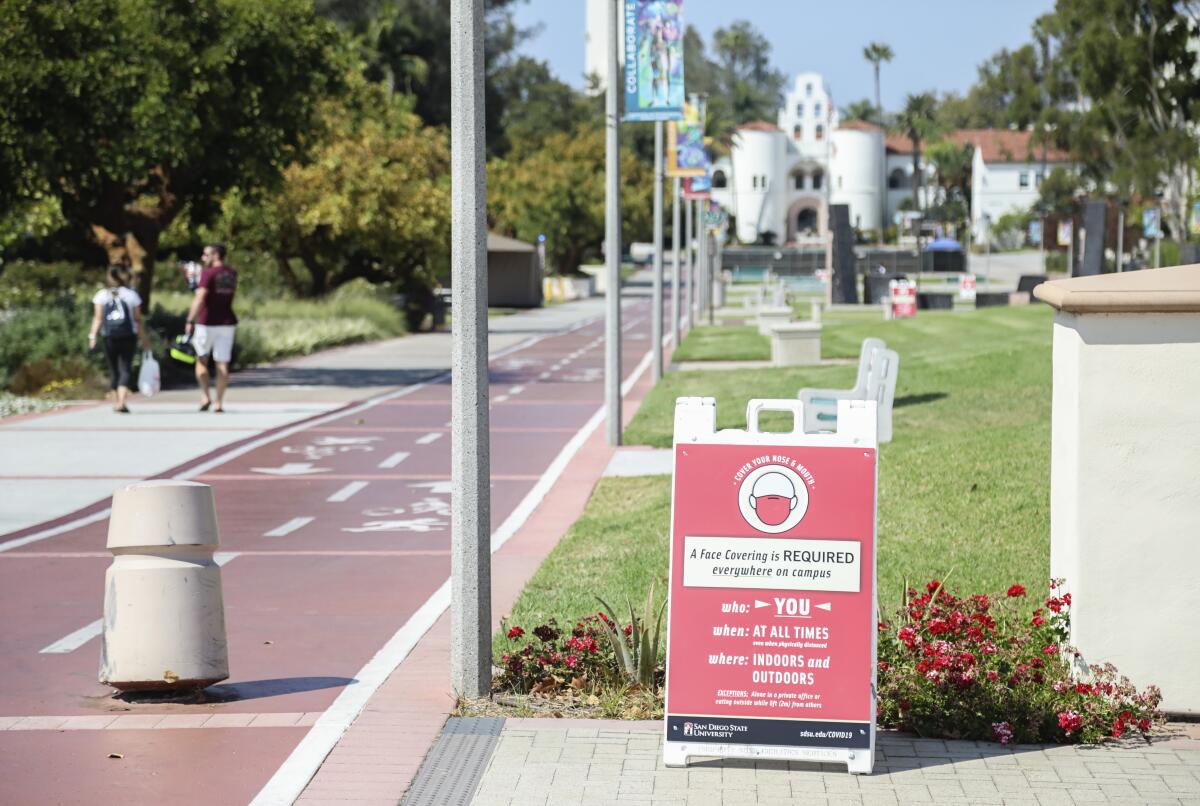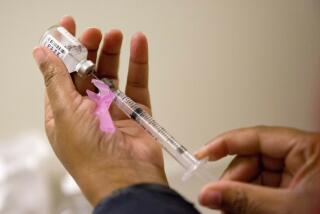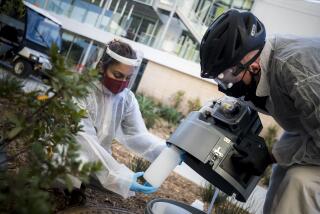Coronavirus cases hit 400 at San Diego State; county remains in second tier

- Share via
The number of San Diego State University students who have tested positive or were considered probable for coronavirus infection reached 400 Tuesday as San Diego County narrowly retained its current status in the second tier of the state’s new reopening hierarchy.
Though it added 114 additional student cases since the weekend, SDSU also announced Tuesday that it has made exceptions in the four-week “pause” of all in-person instruction announced last week when the number of students getting sick started to increase rapidly.
Though most of the more than 7,000 students now living on or off campus will continue to participate only in virtual learning, students enrolled in 20 courses that have “very specific accreditation and licensure requirements” that require “in-person hours” will resume under full personal protection and social-distancing protocols Thursday. A list of the courses — in areas such as cardiopulmonary therapeutics and hearing amplification — is available online. For the most part, the university said in a statement, these are upper division classes with small enrollments, usually fewer than 10 students each.
Though the cases have shot up quickly since SDSU started its fall semester on Aug. 24, the consequences have been much less severe for students than they have for the general population. A county official confirmed by email Tuesday evening that none of the 396 students who have so far tested positive, and four more whose symptoms make infection probable, have required hospitalization.
Campus officials did not comment beyond the university’s short written statement.
Off campus, the COVID-19 picture was mixed Tuesday.
After four straight days posting new case numbers greater than 300, and two greater than 400, new case totals in San Diego County fell to 216 on Sunday and 211 on Monday. COVID-related hospitalizations remained under 300.
Two additional deaths were included in the latest tracking report, one Sunday and one Monday. Both were older than 80, had other medical conditions and died on Aug. 26.
Prospects for further reopening local businesses and other organizations seemed uncertain with the release of the state’s new tier report, which is now said to arrive every Tuesday, that gives each county an update on where it stands in the four-tier, color-coded continuum that gradually allows greater freedom if numbers remain low.
Tiers are defined by each county’s performance in two key measures, the percentage of local tests coming back positive, and the number of cases per 100,000 residents.
To remain in the so-called red tier — the second-most restrictive — the county’s average number of positive tests per 100,000 must average no more than 7 per day and the positive test rate must not exceed 8%. Last week, the state announced that San Diego County’s inaugural numbers in the new system were 5.8 cases per 100,000 per day and a positive rate of 3.4%.
San Diego State University head blames “plague of parties” for a rise in coronavirus cases and orders on-campus students to stay in their dorms.
This week’s report saw those two numbers increase to 6.9 cases per 100,000 and 4.3% positive.
While the positive rate is still low enough to allow the county to move up to a less restrictive tier, the latest case rate is perilously close to hitting the ceiling of 7 cases per 100,000. If it rises above that number for two consecutive weeks, the county would fall back into the lowest, purple tier, and many recently loosened restrictions would tighten again.
In order to remain in the red tier, San Diego County would need to average fewer than 237 new cases per day as tallied not by the day they are announced to the public but rather by the day that each infection is believed to have started. The current rate of 6.9 per 100,000 per day equates to an average of 233 cases per day, as measured during the final week of August, leaving very little breathing room for the next reporting period.
Sisson writes for the San Diego Union-Tribune.
More to Read
Sign up for Essential California
The most important California stories and recommendations in your inbox every morning.
You may occasionally receive promotional content from the Los Angeles Times.
















